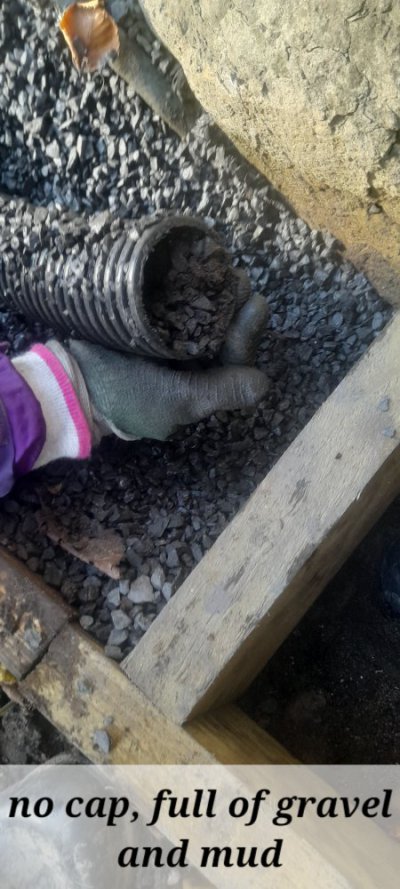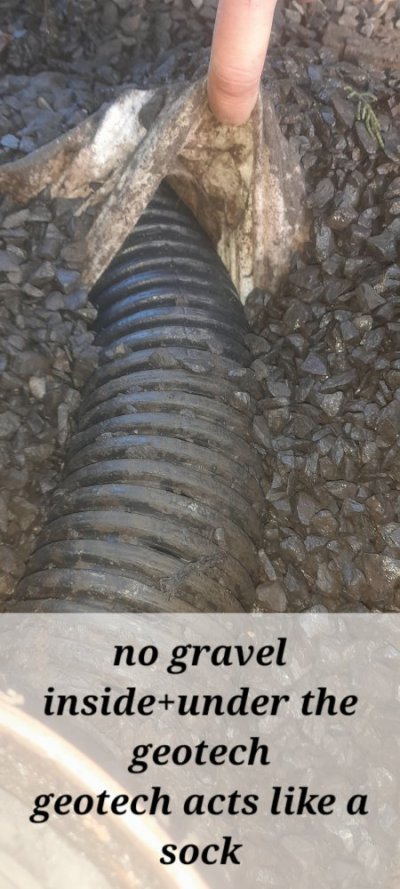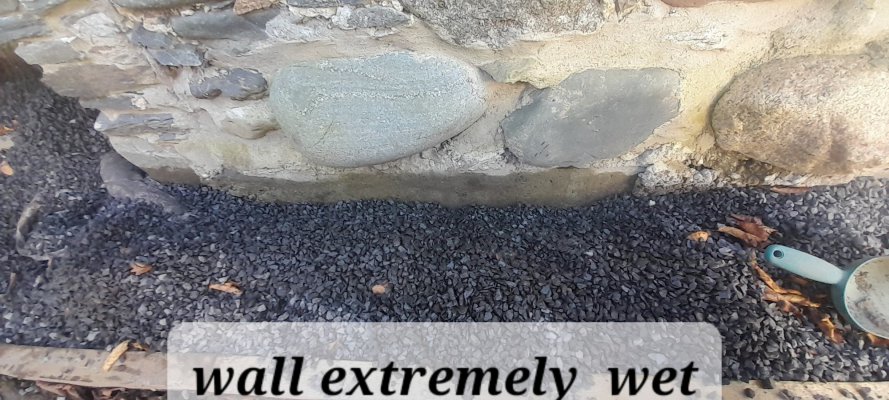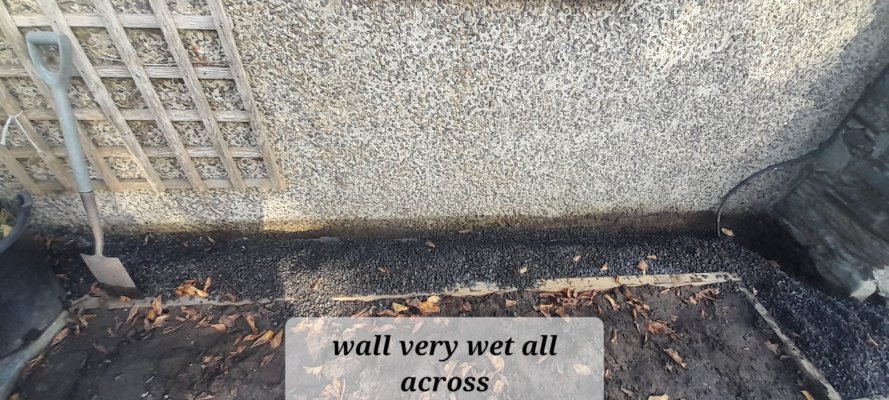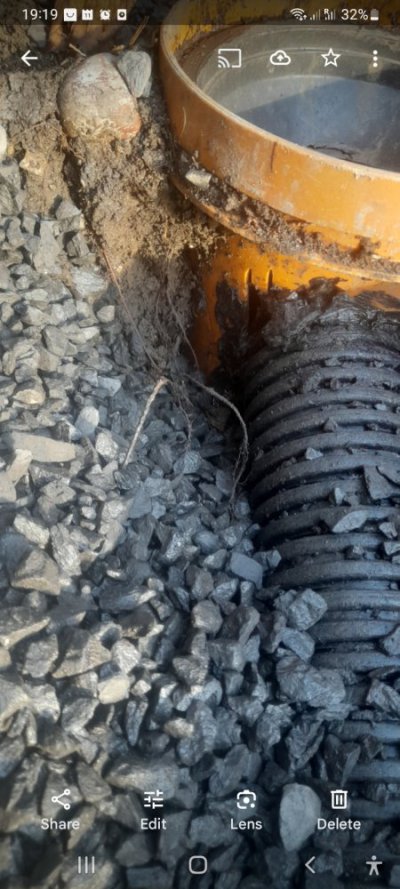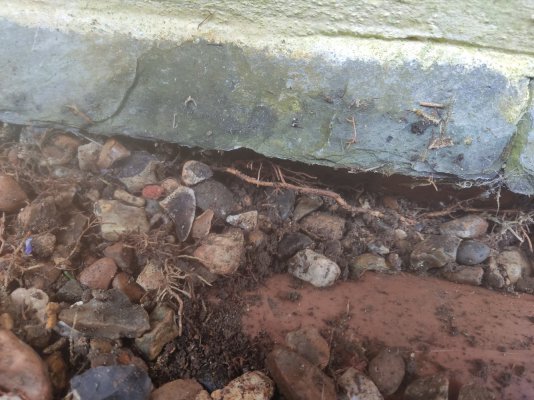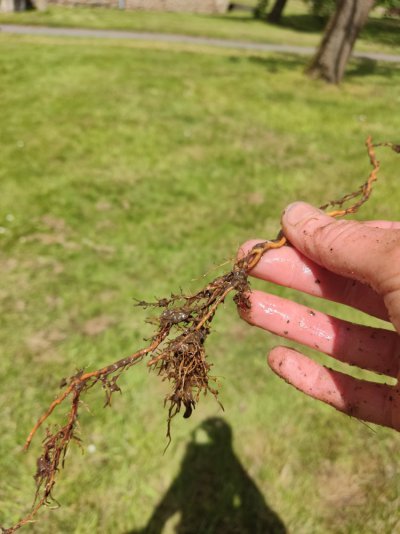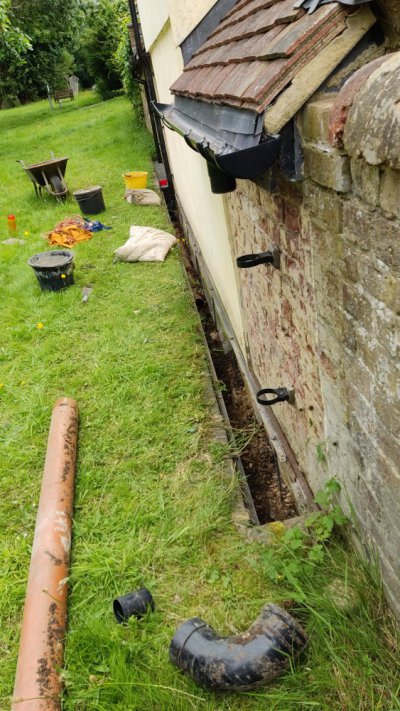data72
Member
- Messages
- 8
- Location
- Periodproperty1
Hello lovely community!
we have a stone cottage above ( 100 years old) and there was some dampness coming into the bottom of a wall from one of the rooms.
Turns out the garden bed just outside the property had soil levels that were higher than the internal floor level and a rose was growing into the wall. So ..soil was reduced to level lower than internal floor , any vegetation growing into wall was removed
BUT THEN then for future prevention of this recurring we thought of the following:
We thought to put a layer of gravel (with drainage pipes feeding into existing drainage system) at the back of the garden bed surrounding the house, closest to the house walls.
This layer/slice of gravel in the garden bed surrounding the house, would act as a boundary between the garden bed soil ( on the one side of the bed and the house wall, on the other side of the bed)
SO ...the garden landscaping company dug out a trench around the exterior walls (within the existing beds) They placed treated timber edge as an outer boundary between the gravel and the soil of the bed. While we were away, they then proceeded to fill the trench with gravel
HOWEVER the problem is that they raised the gravel border height to be higher than the internal floor level. In areas it is more than 10 cm higher.
CONCERN/QUESTION : with what they have done, will it lead to the outside of the wall getting damp every time it rains (and it rains a lot on the IOM) The landscapers claim that it should not be a problem because it will drain away. However it does not make sense to us Why risk any damp by mismatching the gradient between outer and lower floor levels?
In your experience what do you think? Are we overreacting? Or have they made a mistake? If they have how should it be corrected?
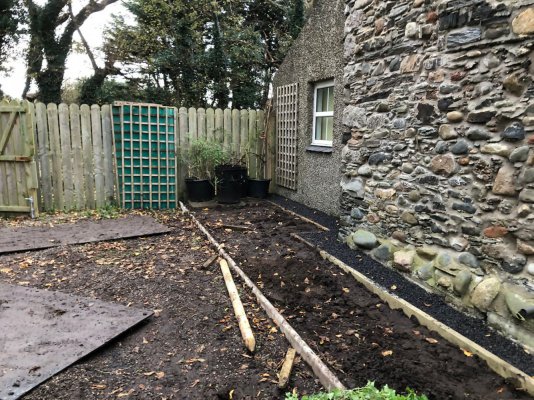
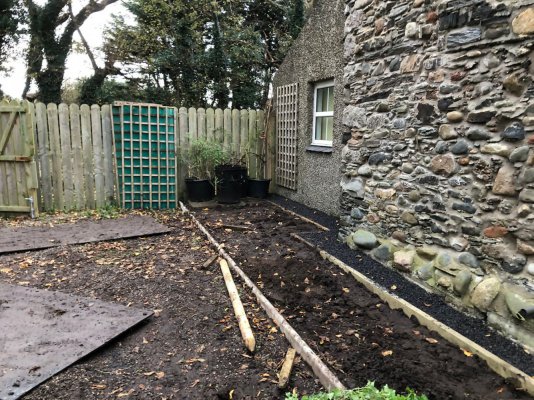
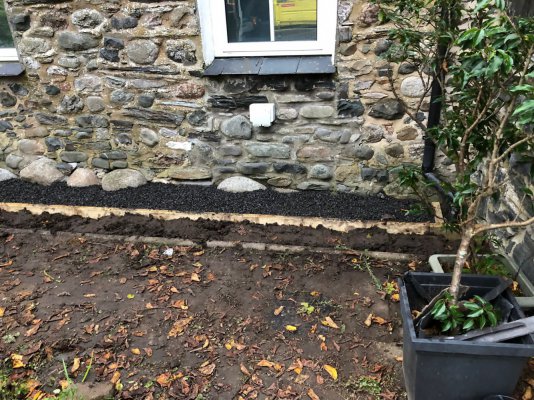
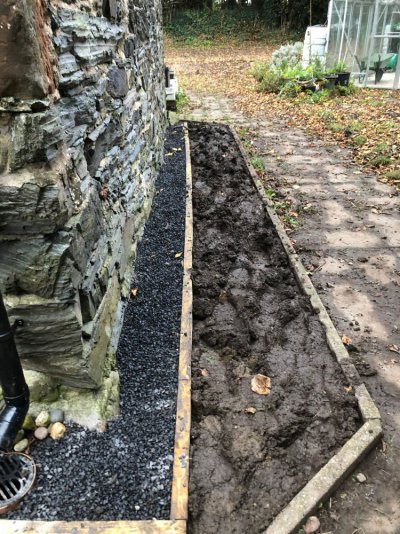
we have a stone cottage above ( 100 years old) and there was some dampness coming into the bottom of a wall from one of the rooms.
Turns out the garden bed just outside the property had soil levels that were higher than the internal floor level and a rose was growing into the wall. So ..soil was reduced to level lower than internal floor , any vegetation growing into wall was removed
BUT THEN then for future prevention of this recurring we thought of the following:
We thought to put a layer of gravel (with drainage pipes feeding into existing drainage system) at the back of the garden bed surrounding the house, closest to the house walls.
This layer/slice of gravel in the garden bed surrounding the house, would act as a boundary between the garden bed soil ( on the one side of the bed and the house wall, on the other side of the bed)
SO ...the garden landscaping company dug out a trench around the exterior walls (within the existing beds) They placed treated timber edge as an outer boundary between the gravel and the soil of the bed. While we were away, they then proceeded to fill the trench with gravel
HOWEVER the problem is that they raised the gravel border height to be higher than the internal floor level. In areas it is more than 10 cm higher.
CONCERN/QUESTION : with what they have done, will it lead to the outside of the wall getting damp every time it rains (and it rains a lot on the IOM) The landscapers claim that it should not be a problem because it will drain away. However it does not make sense to us Why risk any damp by mismatching the gradient between outer and lower floor levels?
In your experience what do you think? Are we overreacting? Or have they made a mistake? If they have how should it be corrected?





